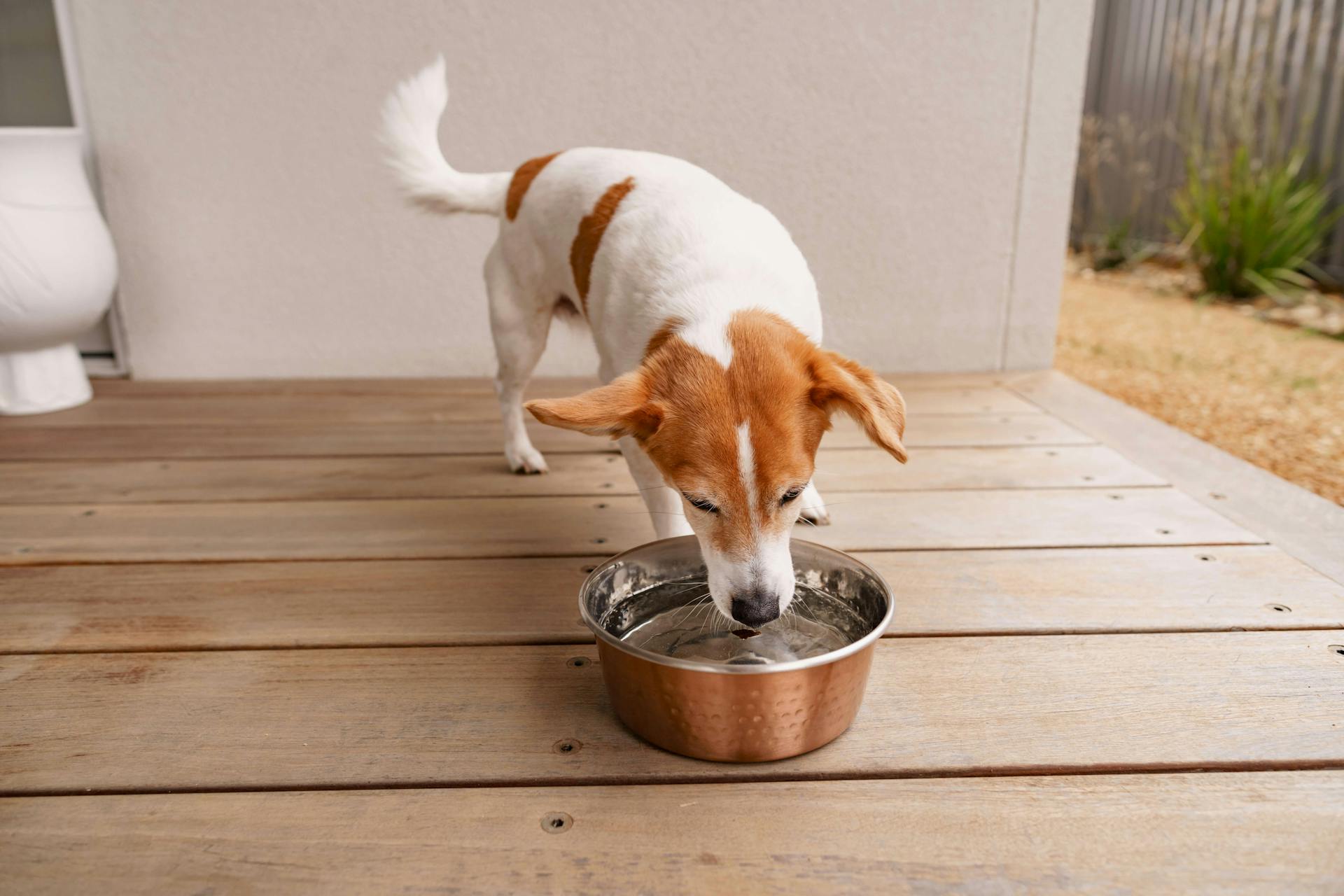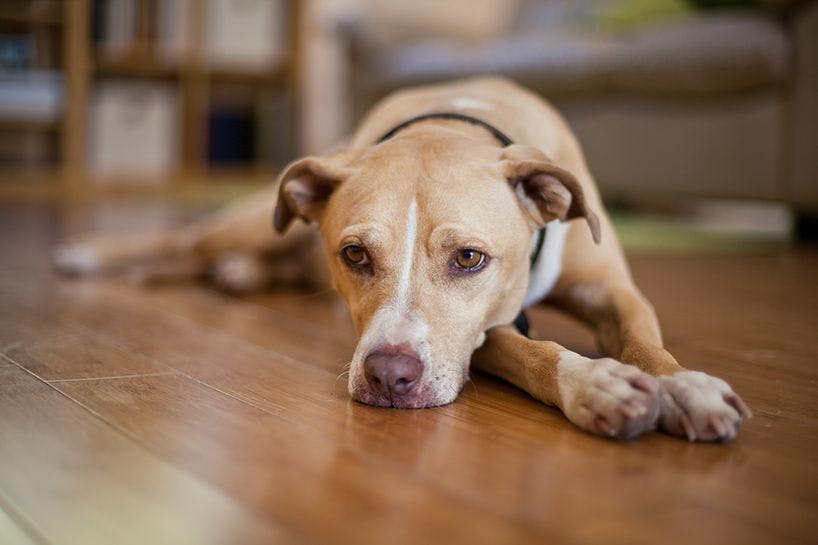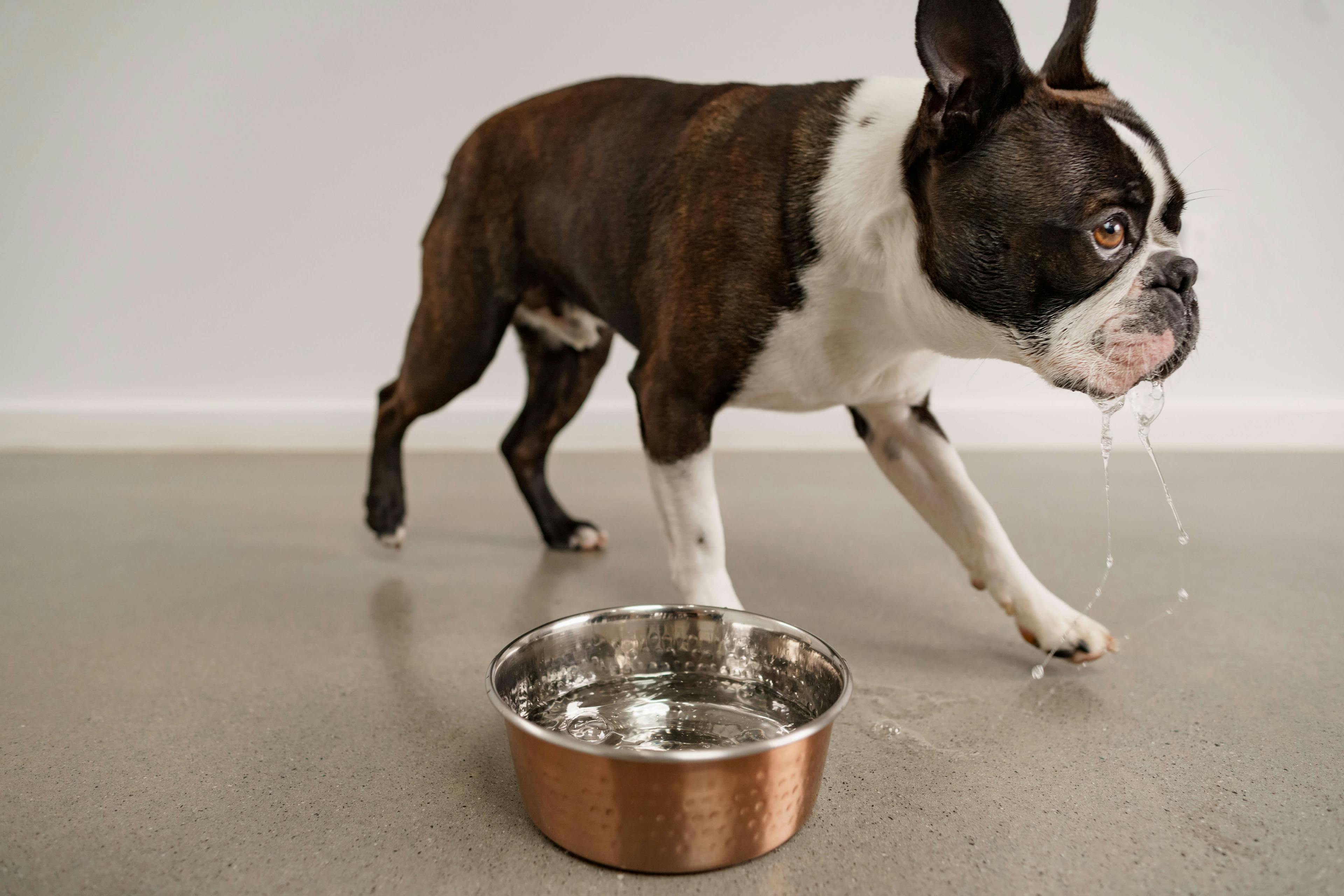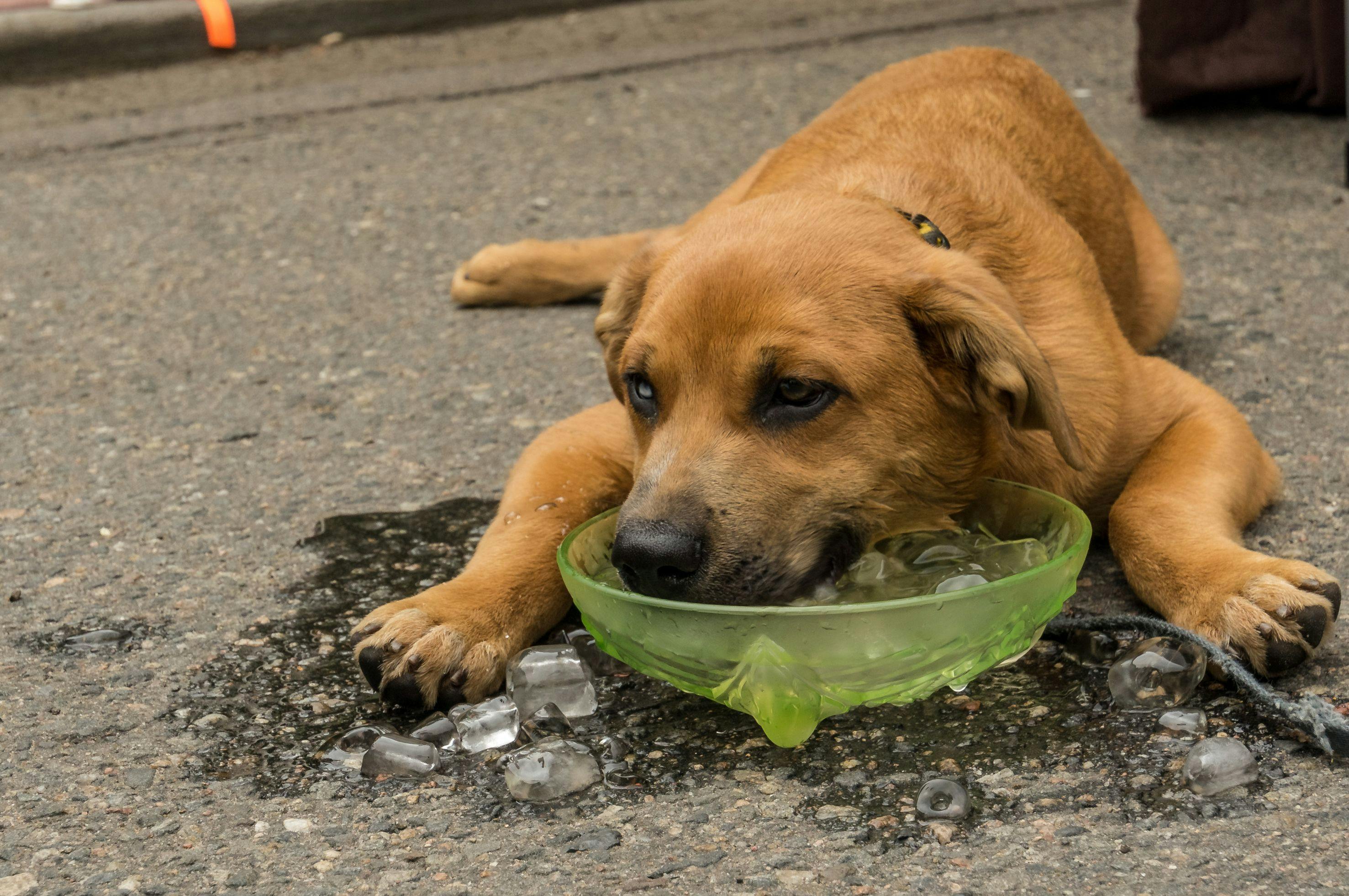
Can dogs get dehydrated? Absolutely. Dehydration in dogs is quite common, and certainly more prevalent during warmer days, months and heatwaves. Although we may think drinking water is definitely a task which doesn’t need monitoring, sometimes some extra coaxing and attention is required.
We asked our VET team to handover all the info pet parents need to ensure a healthy and hydrated pup. Even the fussy ones.
What are the signs of dehydration in dogs?

So, what are the signs or symptoms that your dog has become dehydrated? Firstly, it’s important to know 60% of a dog’s body weight is made up entirely of water – so they really need to maintain this to ensure they’re hydrated and healthy.
If your dog is only experiencing a relatively low level of dehydration, around 5%, then it’s unfortunately undetectable. However, anything beyond this, then you may see or witness the following signs of dehydration:
- Gum and reduced skin elasticity
- Sunken eyes
- Lethargy
- Increase heart rate
- Weak pulse
- Panting
- Diarrhoea
- Excessive drooling
- Dry/tacky gums
If you notice a number of these signs, you should immediately contact your veterinarian, as your dog may be too dehydrated to be treated at home.
Tip
You can check if your dog is hydrated through ‘skin tenting’. Just lift the skin on the neck near the head, and if the skin stays up like a tent for a little while when you let go, this means your pet is dehydrated.You can check if your dog is hydrated through ‘skin tenting’. Just lift the skin on the neck near the head, and if the skin stays up like a tent for a little while when you let go, this means your pet is dehydrated.
What causes dehydration in dogs?
There are many causes for dehydration in dogs, but the most common is usually a result of vomiting or diarrhoea – which can be brought on by various reasons, including a sensitive gut.
“Unfortunately, we (us humans) can be the culprits of these episodes - as who can say no to those puppy eyes begging for our delicious Sunday brunch?” says PETstock VET, Dr Natalia Li.
More causes of dehydration in dogs
- Not drinking enough during the day
- Extreme weather conditions (heat)
- Excessive bleeding
- Diseases that cause a dog to urinate more often
Tip
All dogs can suffer from heat stress, but those with shorter noses, like bulldogs, pugs and boxers, tend to be at higher risk, as they are not as good at regulating their body temperatures.All dogs can suffer from heat stress, but those with shorter noses, like bulldogs, pugs and boxers, tend to be at higher risk, as they are not as good at regulating their body temperatures.
How can you cure dehydration in dogs?

If you suspect your dog is dehydrated, there are many ways you can help to hydrate your dog at home, but if you’re unsure about the level of dehydration and start to notice your dog is becoming increasingly ill, please do not hesitate to contact your local vet.
Immediately move your dog to a quiet and cool area to avoid any more excitement. The more worked up they are, the more water they need, making it impossible to bring down their core temperature.
If they’re only mildly dehydrated, then encourage drinking, and if they’re not a big drinker, try ice blocks with treats inside. Or you can give your dog some cooled water from boiling chicken breast (ensure to remove fatty droplets).
For severe dehydration, with several of the above signs and symptoms recognised, it’s vital they are hydrated at a slow pace, as their body may overcompensate. Also provide them a small bowl of water and a cooling mat (if you have one), then take them to the vet immediately.
Dog dehydration treatment at a vet clinic
Many severely dehydrated dogs will be in shock when they’re brought into a clinic. The key is to stabilise them, not just with water content, but also provide them sufficient tools to stabilise their vascular circulatory system. To do this, dogs are usually provided intravenous fluid therapy which can replace the fluid loss. Your vet will determine the type of fluid bags upon assessment.
At-home cooling and hydration tips for your dog
There are lots of ways to avoid dehydration in dogs, including enticing more interest in your dog’s water source, purchasing cooling products, and getting a little creative. If your dog loves food, you may be onto a winner!
- Ice cubes (the regular kind) - If you want to add some extra cooling and relief for your dog or cat during the heat, add some ice blocks to their bowls. It’s not an expensive option and can also add a level of engagement for some dogs or cats. Many pets love to chew ice blocks, some love to play with them, but most importantly, they will likely ingest the ice.
- Fresh frozen treats - Like plain ice cubes in your dog’s water bowl, creating your own DIY frozen dog treats will add a touch more excitement and flavour to their day. Try mixing water with fruit treats, like watermelon, apple or cucumber.
- Drinking fountains - Drinking fountain style products have become extremely popular for pet owners. They’re great for attracting pets to drink water and filters the water for freshness – so the water doesn’t become stagnant.
- Bigger bowls, or more bowls - Especially during the summer months, you should consider placing more water bowls inside or outside for your dog. Or, for some dogs, larger bowls will be a better solution to hold more water during the day - just be careful not to buy a bowl or use bucket too deep, preventing your pet from drinking when the water gets low. Also, make sure your bowl is weighted or has enough grip that it won’t easily be turned over by your dog.
- Travel bottle and bowl hybrids - If you’re on the road, be prepared! While sometimes it may not seem like your dog needs water after light adventures, it’s always important to provide your dog the opportunity to drink wherever you’re based, especially if you’re out for an extended time or doing exercise. Handy travel water bottles and bowls are convenient and easy to handle when you’ve got your hands full, but still want to keep your furry friend well hydrated.
- Wet food - If your dog is on a dry-only diet, they will be missing out on the natural hydration benefits of wet dog food. So, if your dog is not particularly a big drinker, you may need to consider adding some wet food to their diet, in consultation with your vet.
Quick fire Q&A
How much water should my dog be drinking?
Depending on the size, breed, activity and weight of your dog, the answer will slightly differ. However, for most dogs, they should be drinking between 20ml -70mls per kg of their body weight per day.
What can you give a dehydrated dog?
Depending on the level of dehydration in your dog, you should move them into a cool area and provide water, ice blocks and even a cooling mat to sit on. However, if your dog is severely dehydrated, you will need to hydrate them slowly with a small bowl of water, then take them immediately to a vet.
Can dehydration cause vomiting in dogs?
Usually, dehydration is the result of vomiting, rather than being the cause. However, in some cases, a dehydrated dog can feel nauseous and vomit.
Can I give my dog coconut water for dehydration?
We don’t recommend giving coconut water to aid a dehydrated dog, because if the wrong amount is given, it can be dangerous. Essentially, coconut water has potassium and other electrolytes in it, which might sound like a good idea, but it’s very easy to overdose dogs with electrolytes if the serving amount isn’t correct.
Can I give my dog chicken broth for dehydration?
Yes, giving your dog cooled chicken broth (just the water, and ensure you remove fatty droplets) when they’re dehydrated is a tasty and enticing way to get them interested in drinking – if they’re not already. Your dog will not only get some vital nutrients from the chicken broth, but also be increasing their water content.
Quick tips on cooling and hydration for small animals
For those who also own a cat or another smaller pet, here are some fundamental ways to keep them cool and hydrated during summer.
Cats
Cats can be overly fussy drinkers. Sometimes the bowl isn’t exciting enough, or the water cool enough – it can be a bit of trial and error. Try ensuring your cat has different bowls around the home, ensure you rinse your bowls (cats sometimes don’t like dirty water) and even consider a drinking fountain (running water can be enticing).
Birds
A great way to keep your bird cool during summer is for you to use a spray bottle filled with water and ensure you have a birdbath. If you do have a birdbath, ensure the bath is deep enough for your bird to have a splash around, but not so deep they cannot get out on their own. If you are concerned that your bird may not be able to get out on their own, use a large rock that they can climb onto.
Fish
To help keep your fish friend healthy and swimming at the right temp during summer, ensure your fish tank is away from windows and direct heat. If you notice the temperature in your tank is rising, you can float frozen bottles of water in the top of your tank, then remove these once the temperature is back to normal. Before changing water conditions, please ensure you know the right climate and temperature for your fish. If you’re unsure, speak to a fish specialist.
Small Animals
Rabbits, ferrets and guinea pigs are very sensitive to heat. Always ensure they have a bowl of fresh water and consider adding ice cubes on extremely hot days. It’s essential their hutch is kept in a cool, shady place and brought inside on days when the weather gets too hot.
